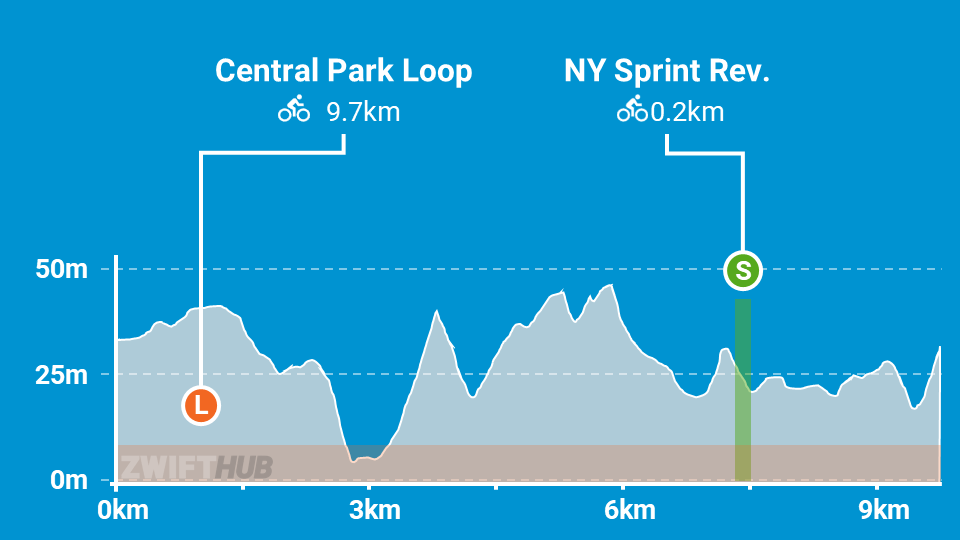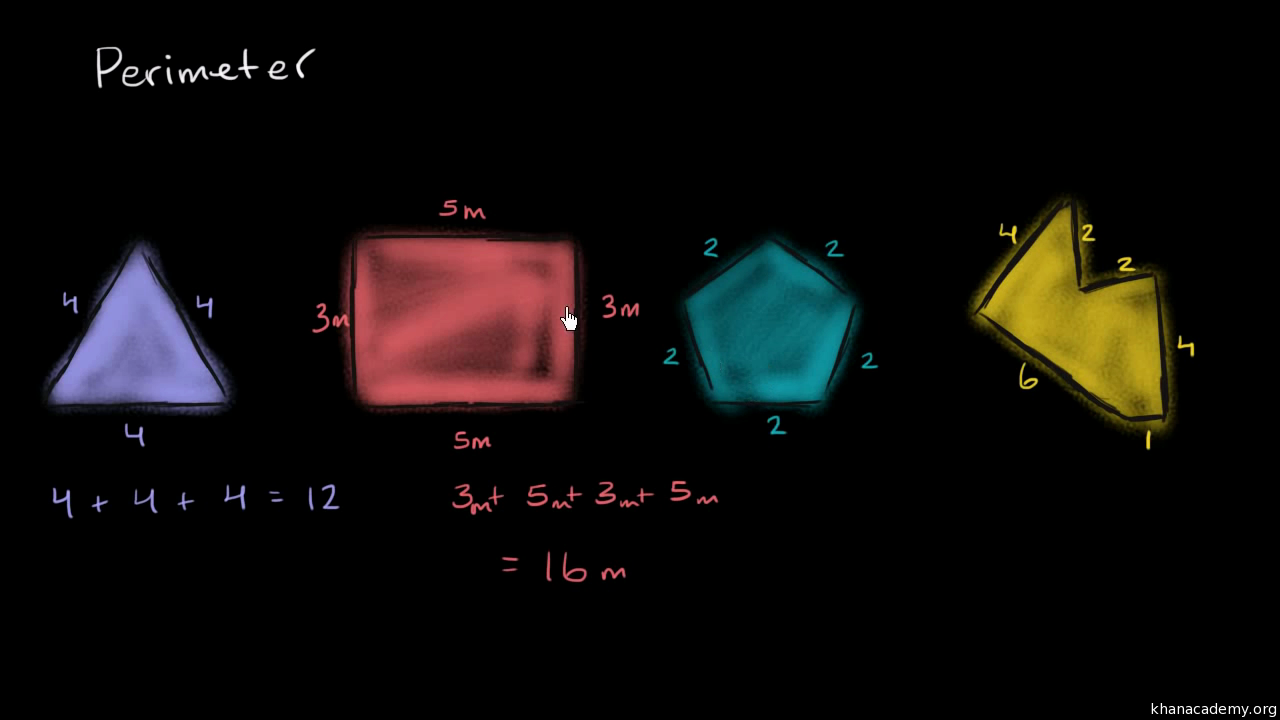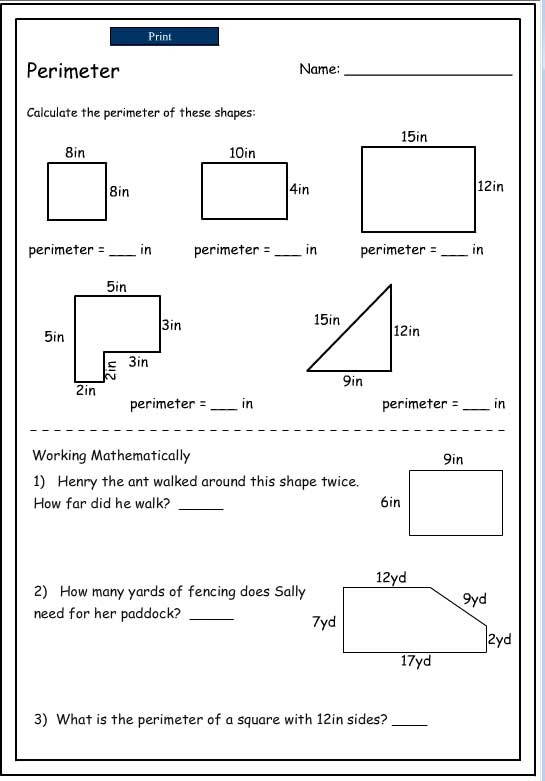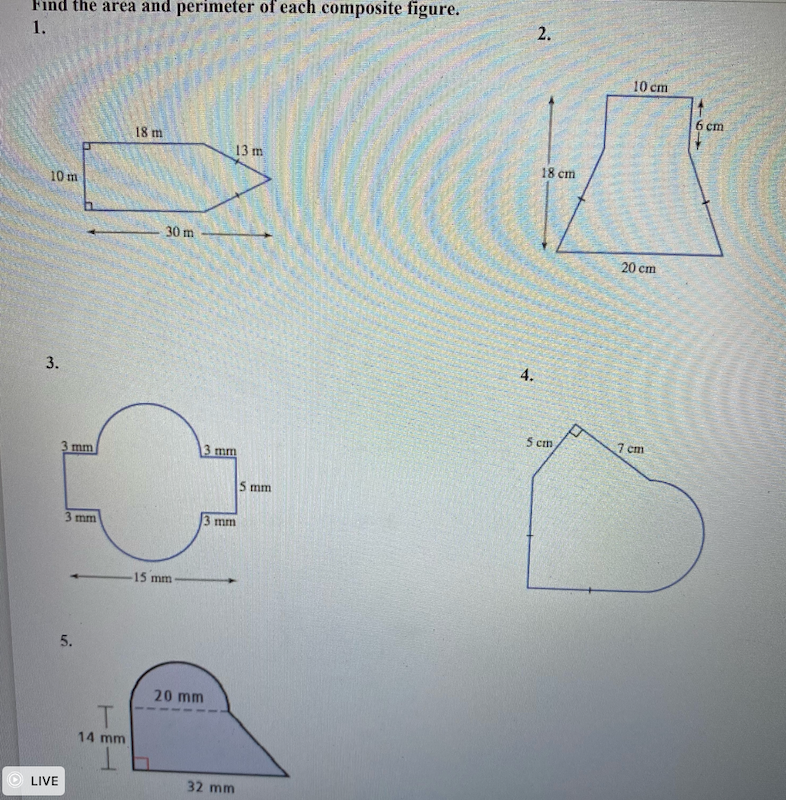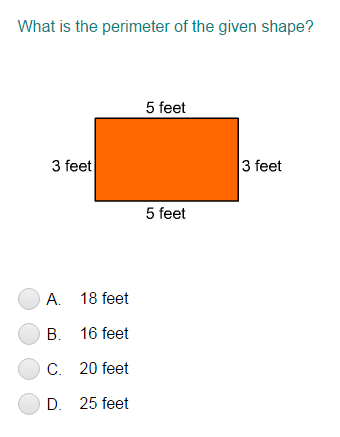Topic what is the perimeter of right triangle: Understanding the perimeter of a right triangle is crucial for various practical applications, from construction to academic studies. In this guide, we will explore the methods to calculate the perimeter, provide real-life examples, and explain the importance of this fundamental geometric concept. Dive in to master the perimeter of right triangles effortlessly!
Table of Content
Understanding the Perimeter of a Right Triangle
The perimeter of a right triangle is the sum of the lengths of all three sides. The sides of a right triangle include the base, the height (or perpendicular), and the hypotenuse.
Formula for Perimeter
If a, b, and c are the sides of a right triangle where c is the hypotenuse, then the perimeter (P) is given by:
\[ P = a + b + c \]
Using the Pythagorean Theorem
In many cases, the length of the hypotenuse (c) is not directly provided. In such instances, the Pythagorean theorem is used to determine the hypotenuse:
\[ c = \sqrt{a^2 + b^2} \]
Thus, the perimeter can also be written as:
\[ P = a + b + \sqrt{a^2 + b^2} \]
Examples
- Given a right triangle with a base of 6 units and a height of 8 units:
- Calculate the hypotenuse:
\[ c = \sqrt{6^2 + 8^2} = \sqrt{36 + 64} = \sqrt{100} = 10 \] - Calculate the perimeter:
\[ P = 6 + 8 + 10 = 24 \text{ units} \]
- Calculate the hypotenuse:
- Given a right triangle with a base of 5 units and a hypotenuse of 13 units:
- Calculate the height:
\[ 13^2 = 5^2 + b^2 \implies 169 = 25 + b^2 \implies b^2 = 144 \implies b = \sqrt{144} = 12 \] - Calculate the perimeter:
\[ P = 5 + 12 + 13 = 30 \text{ units} \]
- Calculate the height:
Steps to Calculate the Perimeter
- Identify the lengths of all three sides of the right triangle.
- If one side is unknown, use the Pythagorean theorem to find it.
- Add the lengths of the base, height, and hypotenuse to get the perimeter.
Applications
Knowing the perimeter of a right triangle is useful in various real-world applications such as construction, navigation, and design where precise measurements are crucial.

READ MORE:
Introduction to Right Triangles
A right triangle is a type of triangle that has one angle measuring 90 degrees. This special triangle has unique properties and formulas that make it a fundamental concept in geometry. The side opposite the right angle is called the hypotenuse, while the other two sides are known as the legs. Understanding right triangles is essential for solving various mathematical problems, especially those involving trigonometry and the Pythagorean theorem.
The perimeter of a right triangle is the sum of the lengths of its three sides. If the lengths of the legs are \( a \) and \( b \), and the hypotenuse is \( c \), the perimeter \( P \) can be calculated using the formula:
\[
P = a + b + c
\]
The Pythagorean theorem is a key principle used to determine the length of the hypotenuse in a right triangle. It states that the square of the hypotenuse is equal to the sum of the squares of the other two sides:
\[
c^2 = a^2 + b^2
\]
To find the perimeter when only the legs are known, you can first use the Pythagorean theorem to find the hypotenuse, and then sum all three sides. For example, if the legs of a right triangle are 3 units and 4 units, the hypotenuse can be calculated as follows:
\[
c = \sqrt{3^2 + 4^2} = \sqrt{9 + 16} = \sqrt{25} = 5
\]
Thus, the perimeter of the triangle is:
\[
P = 3 + 4 + 5 = 12 \text{ units}
\]
Right triangles are prevalent in various applications, from construction and engineering to computer graphics and navigation. Their properties and formulas provide essential tools for problem-solving and understanding more complex geometric concepts.
Understanding the Perimeter of a Right Triangle
The perimeter of a right triangle is the sum of the lengths of its three sides: the two legs and the hypotenuse. To find the perimeter, you need to know the lengths of these sides.
Here is the formula for the perimeter \(P\) of a right triangle:
\[
P = a + b + c
\]
where \(a\) and \(b\) are the lengths of the legs and \(c\) is the length of the hypotenuse.
Let's break down the process step-by-step:
- Identify the sides: In a right triangle, the sides \(a\) and \(b\) form the right angle, and the side \(c\) is the hypotenuse.
- Calculate the hypotenuse (if not given): Use the Pythagorean theorem: \[ c = \sqrt{a^2 + b^2} \]
- Sum the lengths of all three sides: Add the lengths of \(a\), \(b\), and \(c\) to find the perimeter: \[ P = a + b + c \]
For example, if a right triangle has legs of 3 units and 4 units, first find the hypotenuse:
\[
c = \sqrt{3^2 + 4^2} = \sqrt{9 + 16} = \sqrt{25} = 5
\]
Then, the perimeter is:
\[
P = 3 + 4 + 5 = 12
\]
This approach can be applied to any right triangle, provided you have or can determine the lengths of its sides.
Formulas for Calculating Perimeter
The perimeter of a right triangle is the total length of its three sides. The basic formula for the perimeter \( P \) is:
\[ P = a + b + c \]
where \( a \) and \( b \) are the legs of the triangle and \( c \) is the hypotenuse. To find the perimeter, follow these steps:
- Identify the lengths of the two legs \( a \) and \( b \).
- If the hypotenuse \( c \) is not known, calculate it using the Pythagorean theorem:
\[ c = \sqrt{a^2 + b^2} \] - Add the lengths of the three sides to get the perimeter:
\[ P = a + b + c \]
Here are some examples to illustrate:
- If a right triangle has legs of 3 units and 4 units, the hypotenuse is:
Therefore, the perimeter is:
\[ c = \sqrt{3^2 + 4^2} = \sqrt{9 + 16} = \sqrt{25} = 5 \]
\[ P = 3 + 4 + 5 = 12 \text{ units} \] - If a right triangle has legs of 5 units and 12 units, the hypotenuse is:
Therefore, the perimeter is:
\[ c = \sqrt{5^2 + 12^2} = \sqrt{25 + 144} = \sqrt{169} = 13 \]
\[ P = 5 + 12 + 13 = 30 \text{ units} \]
By using these formulas and steps, you can easily calculate the perimeter of any right triangle.
Examples and Practice Problems
Understanding how to calculate the perimeter of a right triangle involves practicing with various examples. Here are some step-by-step problems to enhance your learning:
Example 1
Find the perimeter of a right triangle with sides of lengths 8 m, 9 m, and 12.4 m:
- Identify the side lengths: \( a = 8 \) m, \( b = 9 \) m, \( c = 12.4 \) m.
- Use the perimeter formula \( p = a + b + c \).
- Calculate: \( p = 8 + 9 + 12.4 = 29.4 \) m.
The perimeter is 29.4 meters.
Example 2
Find the perimeter of a right triangle with sides of lengths 10 m, 24 m, and 26 m:
- Identify the side lengths: \( a = 10 \) m, \( b = 24 \) m, \( c = 26 \) m.
- Use the perimeter formula \( p = a + b + c \).
- Calculate: \( p = 10 + 24 + 26 = 60 \) m.
The perimeter is 60 meters.
Example 3
Find the perimeter of a right triangle with sides of lengths 5 m and 12 m:
- Identify the known side lengths: \( a = 5 \) m, \( b = 12 \) m.
- Use the Pythagorean theorem to find \( c \): \[ c = \sqrt{a^2 + b^2} = \sqrt{5^2 + 12^2} = \sqrt{25 + 144} = \sqrt{169} = 13 \]
- Use the perimeter formula \( p = a + b + c \).
- Calculate: \( p = 5 + 12 + 13 = 30 \) m.
The perimeter is 30 meters.
Practice Problems
- What is the perimeter of a right triangle with sides of lengths 7 m, 9 m, and 11.4 m?
- Calculate the perimeter of a right triangle with sides of lengths 11 m, 15 m, and 18.6 m.
- A right triangle has sides of lengths 9 m and 12 m. Find its perimeter.
Practice these problems to improve your understanding of calculating the perimeter of right triangles. Use the Pythagorean theorem where necessary to find missing sides and apply the perimeter formula \( p = a + b + c \).

Real-Life Applications
The perimeter of a right triangle has numerous practical applications in various fields. Understanding these applications can enhance our comprehension of geometry and its relevance to everyday life. Here are some real-life scenarios where calculating the perimeter of a right triangle is essential:
- Construction and Architecture: Builders and architects frequently use right triangles in their designs, particularly when creating stairs, ramps, and roof slopes. Calculating the perimeter helps determine the amount of materials needed.
- Landscaping: When designing gardens or parks, landscapers often employ triangular shapes. Knowing the perimeter allows for accurate fencing or border installations.
- Navigation: Sailors and pilots use right triangles in navigation to calculate distances and plot courses, especially when considering direct routes that form right angles with other paths.
- Art and Design: Artists and designers utilize right triangles in their works to create visually pleasing and structurally sound pieces. Calculating the perimeter can be crucial for material estimates and overall design plans.
By understanding the perimeter of a right triangle, we can solve practical problems more efficiently and apply mathematical principles to real-world situations effectively.
FAQs and Common Questions
Here are some frequently asked questions about the perimeter of a right triangle:
- 1. What is the perimeter of a right triangle?
The perimeter of a right triangle is the sum of the lengths of its three sides. It can be calculated using the formula:
\[
\text{Perimeter} = a + b + c
\]
where \(a\) and \(b\) are the lengths of the legs, and \(c\) is the length of the hypotenuse. - 2. How do you find the hypotenuse?
The hypotenuse can be found using the Pythagorean Theorem:
\[
c = \sqrt{a^2 + b^2}
\] - 3. How do you calculate the perimeter if you only know the legs?
First, use the Pythagorean Theorem to find the hypotenuse:
\[
c = \sqrt{a^2 + b^2}
\]Then, add all sides to get the perimeter:
\[
\text{Perimeter} = a + b + \sqrt{a^2 + b^2}
\] - 4. Can you calculate the perimeter with the hypotenuse and one leg?
Yes, use the Pythagorean Theorem to find the other leg:
\[
a = \sqrt{c^2 - b^2}
\] (if you know \(c\) and \(b\)) or\[
b = \sqrt{c^2 - a^2}
\] (if you know \(c\) and \(a\)).Then add all sides:
\[
\text{Perimeter} = a + b + c
\] - 5. Are there any special cases for calculating the perimeter?
Yes, for special right triangles like 45-45-90 and 30-60-90 triangles:
- 45-45-90 triangle: If the legs are \(a\), the hypotenuse \(c\) is \(a\sqrt{2}\). The perimeter is:
\[
\text{Perimeter} = a + a + a\sqrt{2} = a(2 + \sqrt{2})
\] - 30-60-90 triangle: If the shorter leg is \(a\), the longer leg \(b\) is \(a\sqrt{3}\), and the hypotenuse \(c\) is \(2a\). The perimeter is:
\[
\text{Perimeter} = a + a\sqrt{3} + 2a = a(3 + \sqrt{3})
\]
- 45-45-90 triangle: If the legs are \(a\), the hypotenuse \(c\) is \(a\sqrt{2}\). The perimeter is:
- 6. What units should the perimeter be in?
The perimeter should be in the same units as the side lengths. For example, if the sides are measured in meters, the perimeter will be in meters.
- 7. Can the perimeter be negative?
No, the perimeter of a triangle cannot be negative. The side lengths are always positive, making the perimeter a positive value.
- 8. How can I verify my perimeter calculation?
Double-check your side lengths and calculations. You can also use online calculators for verification.
- 9. What are common mistakes to avoid?
Common mistakes include using incorrect side lengths or misapplying the Pythagorean Theorem. Ensure accurate measurements and correct use of formulas.
Diện Tích và Chu Vi của Tam Giác Vuông | Toán Học với Mr. J
READ MORE:
Cách Tìm Diện Tích và Chu Vi của Tam Giác Vuông




